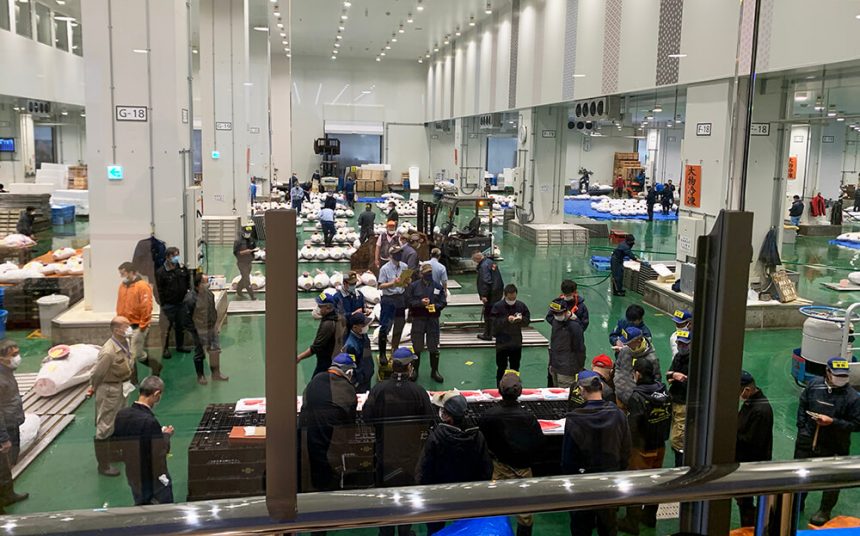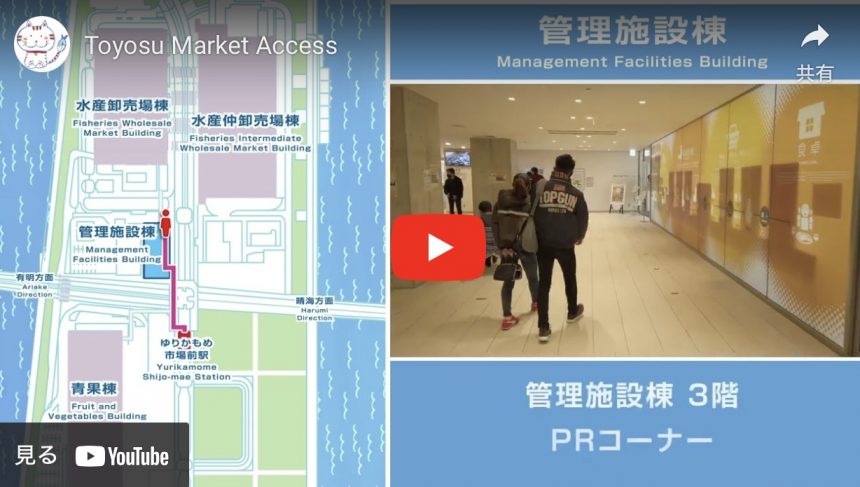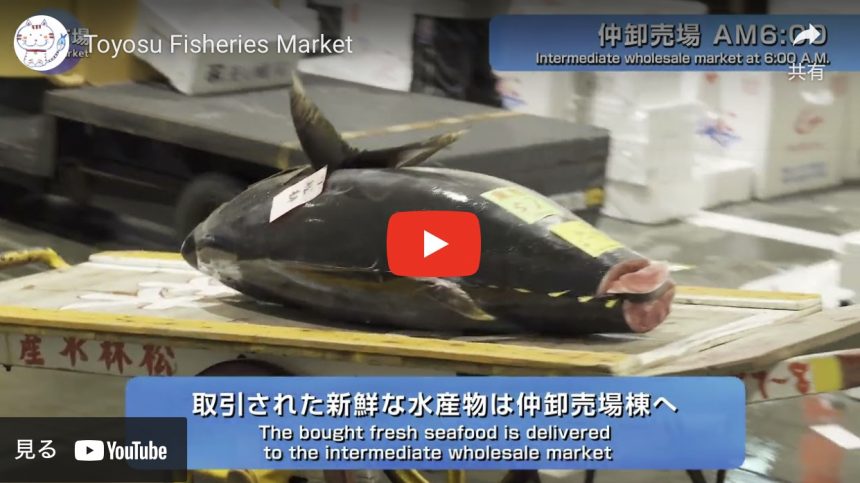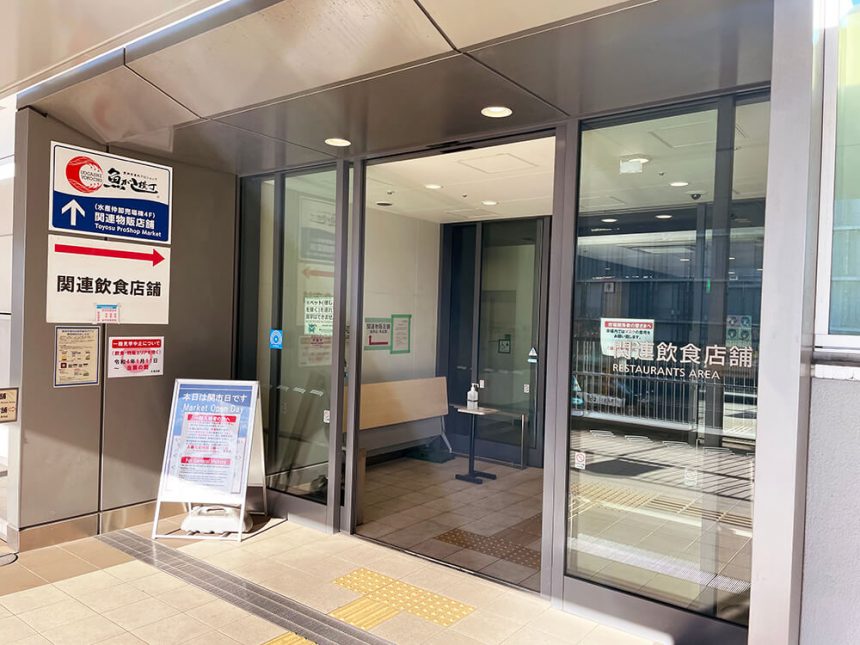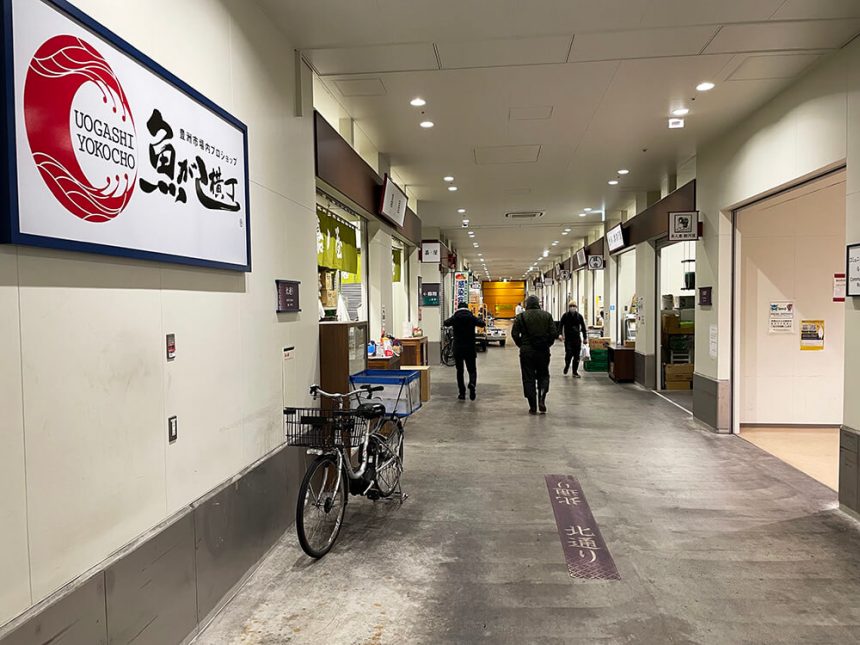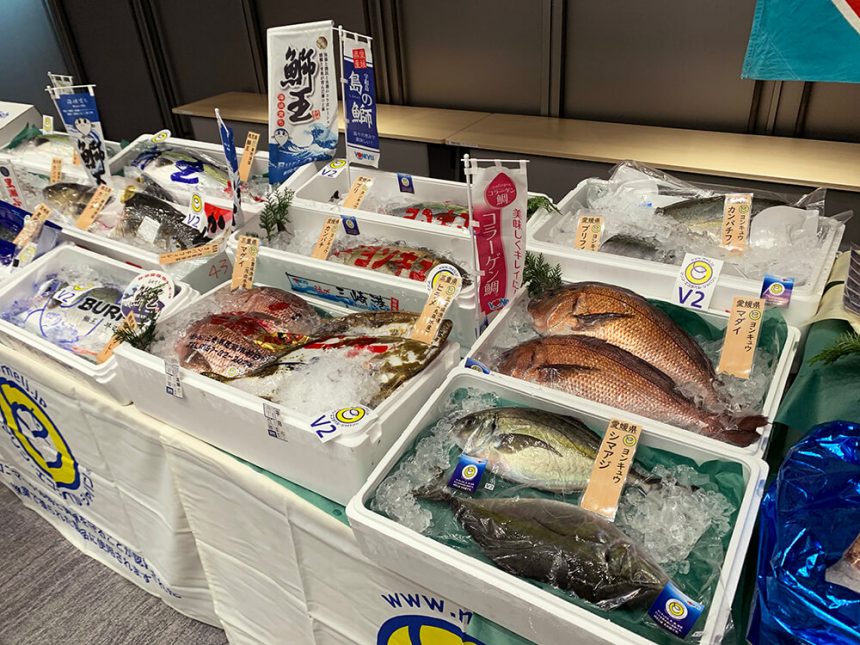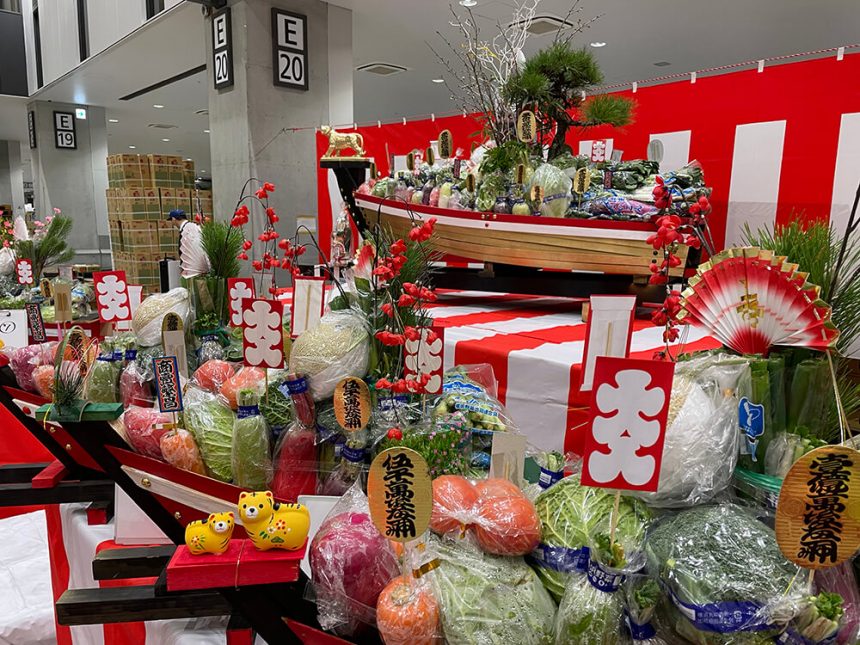Wholesale Auctions
- Preparing for the auctions
- The tuna auction
The daily wholesale auctions for seafood and farm produce are one of the key functions of Toyosu Market and count among the market’s most popular viewing attractions. Hundreds of sellers, buyers, and market employees mill about the main fisheries hall early in the morning before the auctions start, and with small electric-powered trucks also whizzing around, the scene can appear somewhat chaotic to the untrained eye. In reality, however, the market’s system of transactions is highly organized and efficient.
Preparing for the auctions
Most auctions at the market take place in the Fisheries Wholesale Market Building, where preparations start soon after midnight. The seafood auctions are staggered throughout the morning because shipments of different products arrive at the market at different times, but the general process is the same for all auctions. First, once the seafood to be auctioned arrives, the market’s seven wholesale companies inspect their respective products and line the items up on the market floor. Large fish such as tuna and swordfish are placed on boards in rows on the floor, whereas products such as smaller fish, shrimp, clams, and sea urchins are presented in styrofoam boxes.
Once the wholesalers have finished grading their products and placing them on the floor, the buyers—intermediate wholesalers and so-called authorized buyers (representatives of major supermarket chains and other large retailers who make purchases large enough to remove the need for intermediaries)—are allowed to start inspecting the products in order to prepare for bidding.
The way these evaluations are conducted varies by product. With tuna, it mainly involves meticulous visual inspection, including using a flashlight to check the color and consistency of the flesh. If the tuna is frozen, a pre-cut piece of flesh from the tail end is placed on top of the body to allow for easier inspection of the texture.
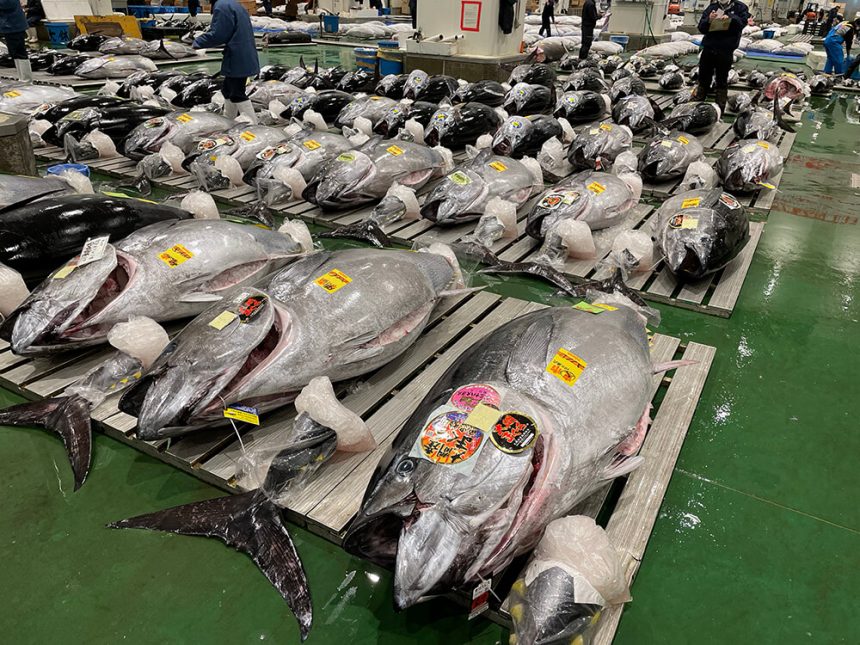
The tuna auction
Auctions on the fisheries market floor start at 5:30 a.m. with wholesalers ringing bells to signal the opening of sales. Though only one type of product—e.g., fresh or frozen tuna—is auctioned in a specific time slot, the seven fisheries wholesale companies all proceed simultaneously, so the buyers gather into distinct groups around the wholesalers.
Once a wholesaler calls out a number indicating the product being auctioned, the buyers start making bids. They indicate their bid amounts with hand signals called teyari, which are unique to the market. Incoming bids are rattled off by the wholesaler in a distinctive, often animated tone. As soon as an item is sold, the auction moves on to the next one while the successful buyer’s representatives carry or push their purchase off the market floor. When the auction for the first category of the day—usually fresh tuna—is completed, the wholesalers immediately initiate the next auction.
This system is basically the same for fruit and vegetable auctions, which are conducted in the Fruit and Vegetable Market Building. In comparison to seafood, however, the items put up for auction are not as numerous, being mainly limited to premium and seasonal produce.
